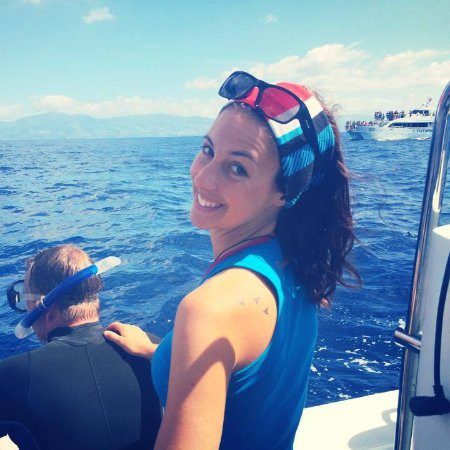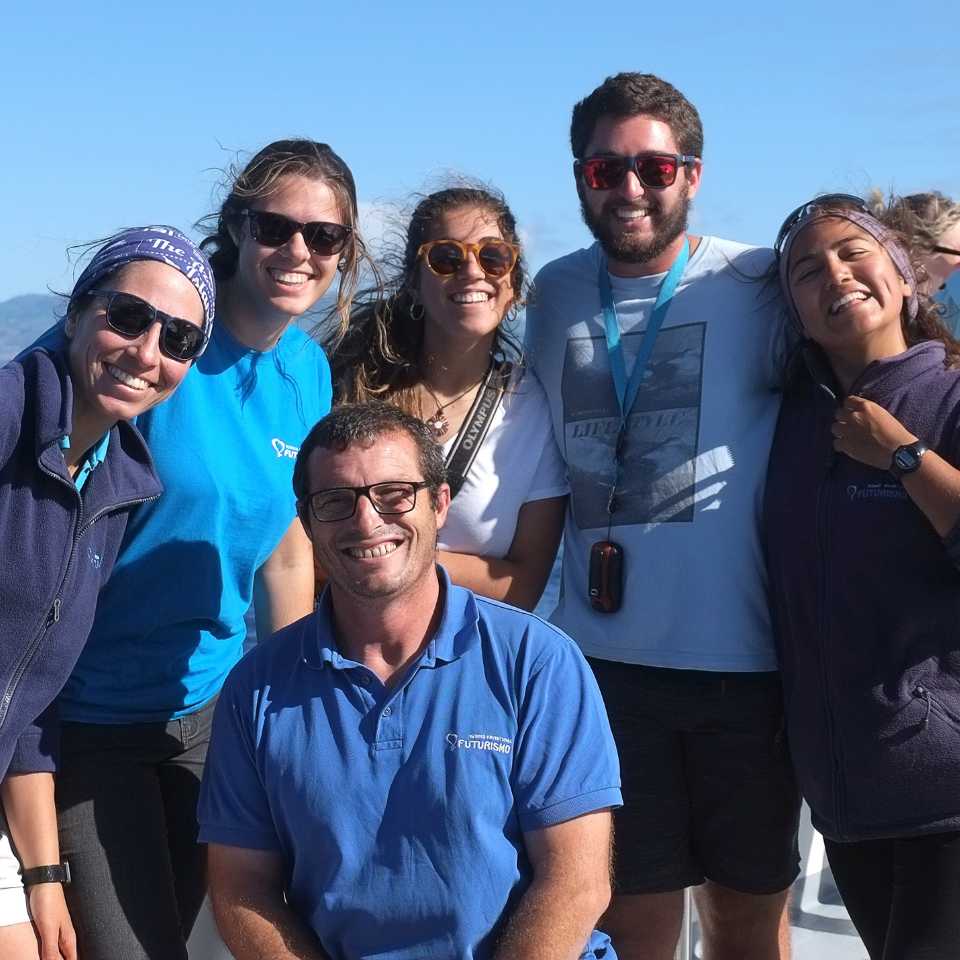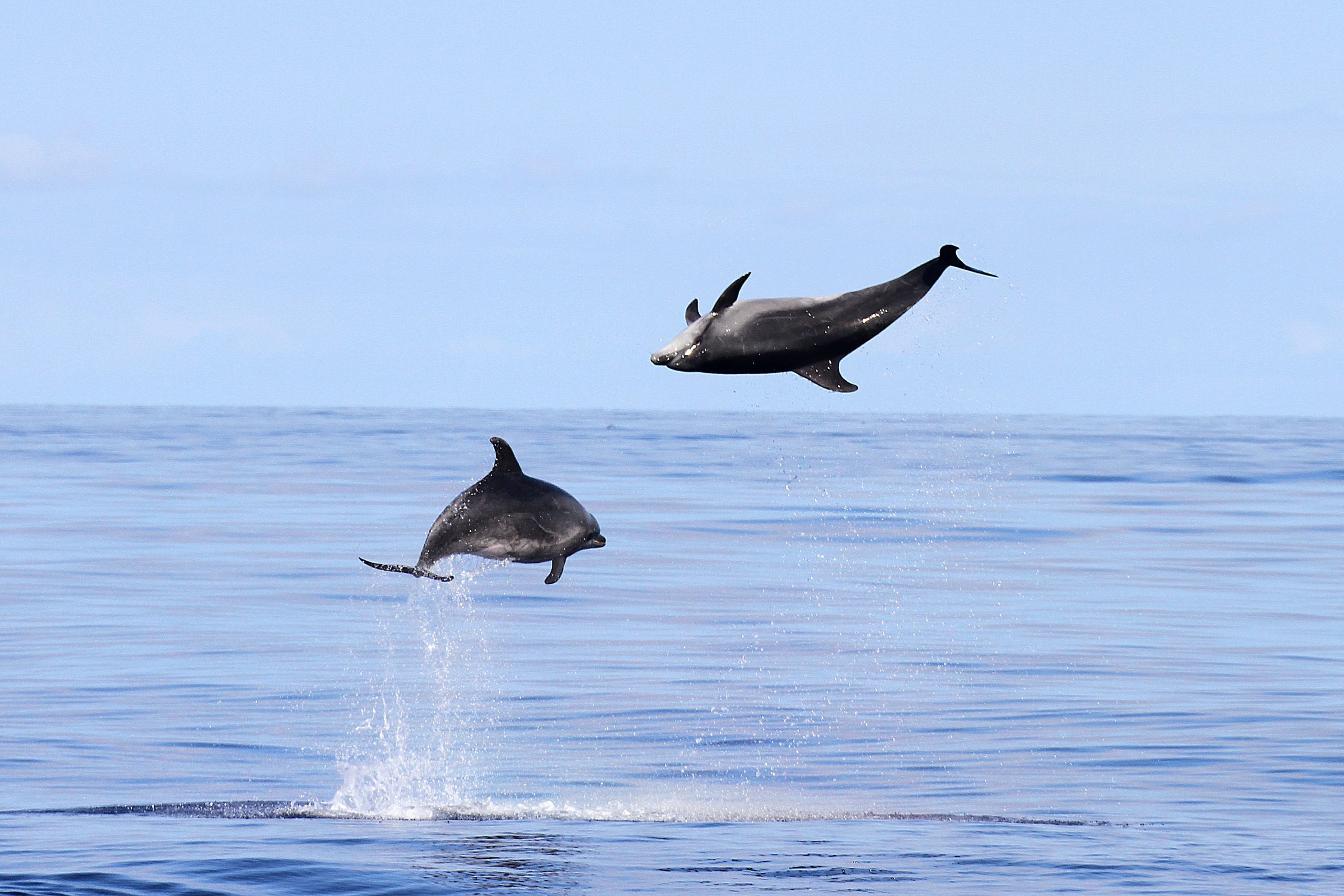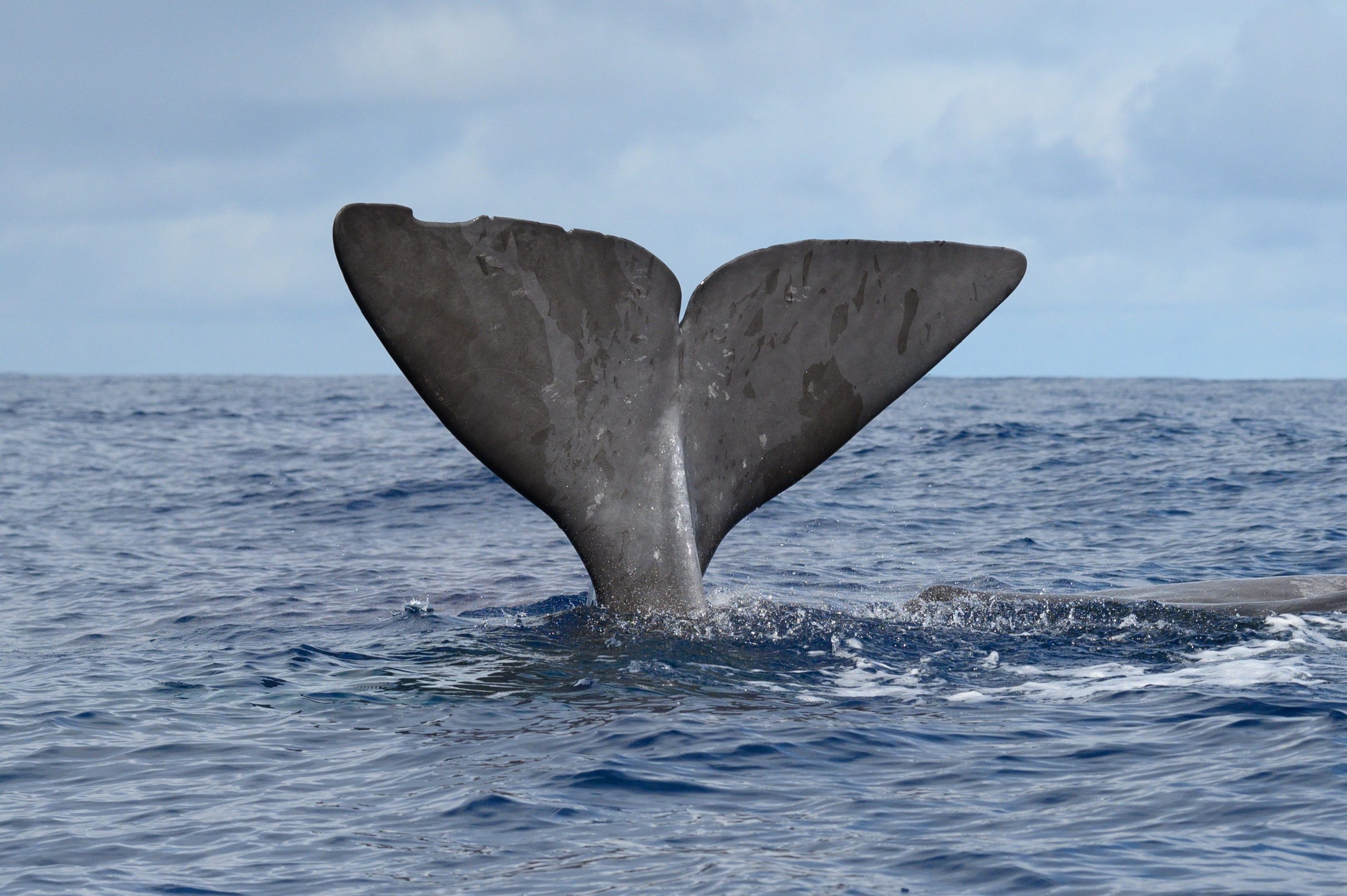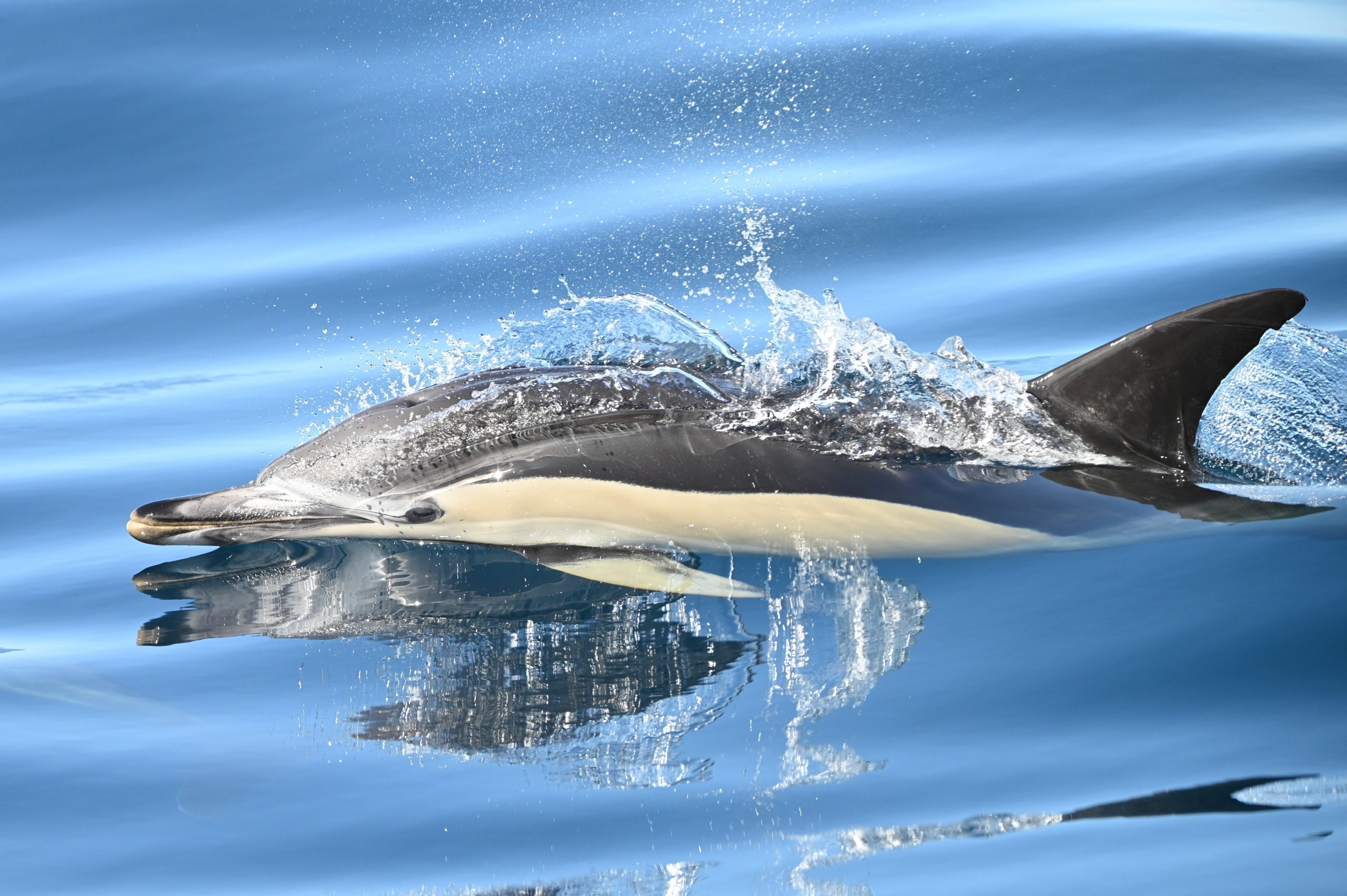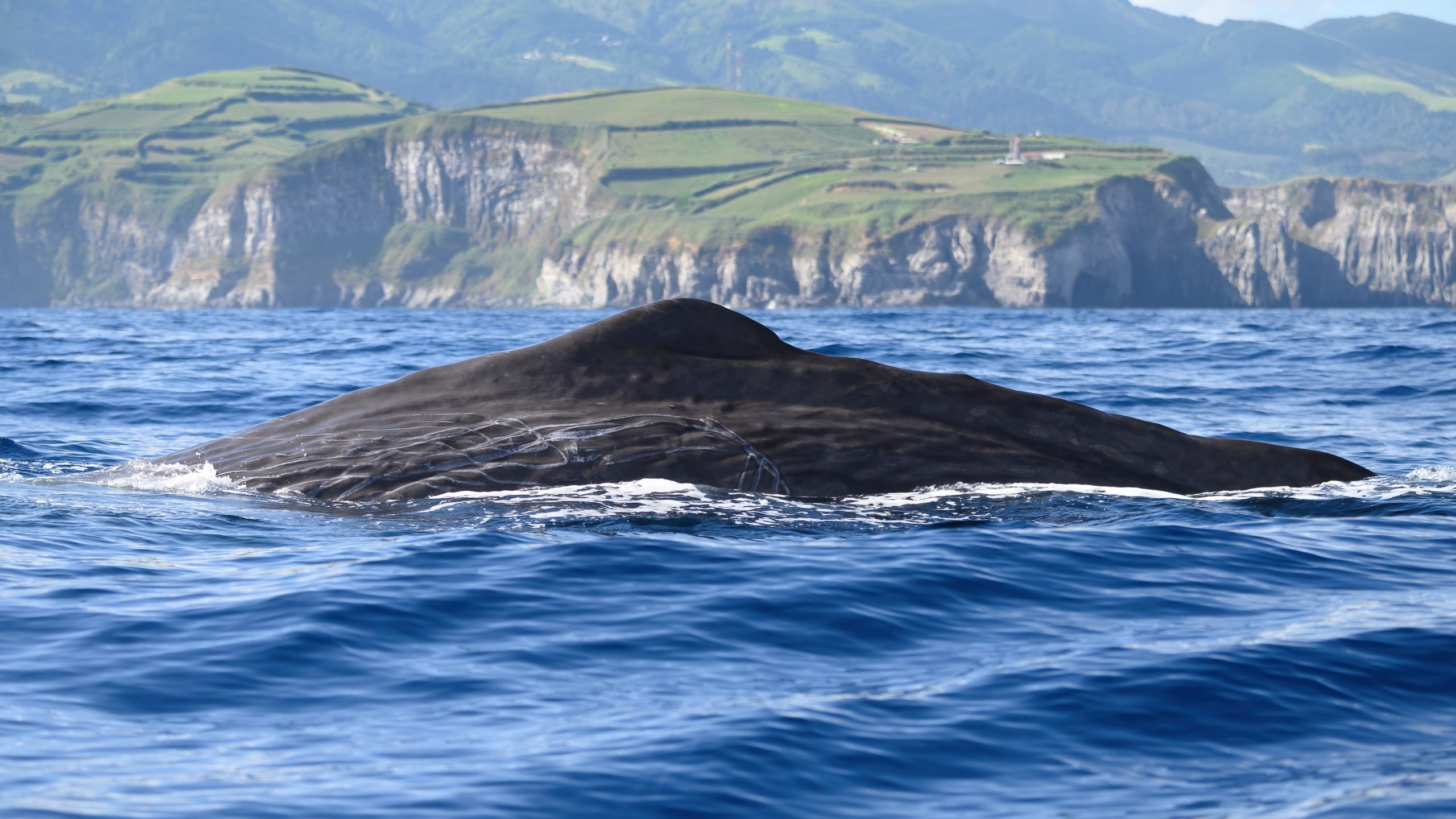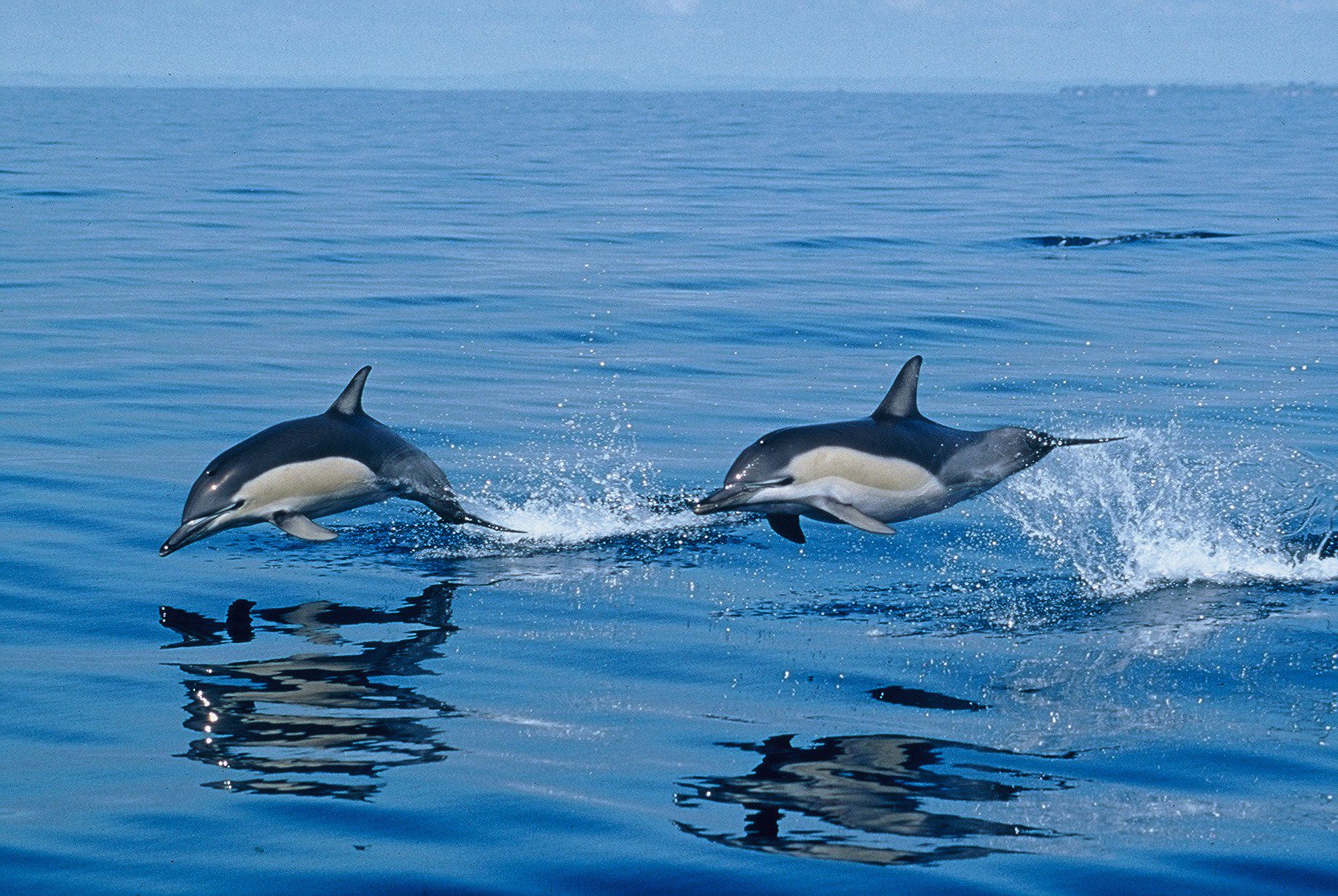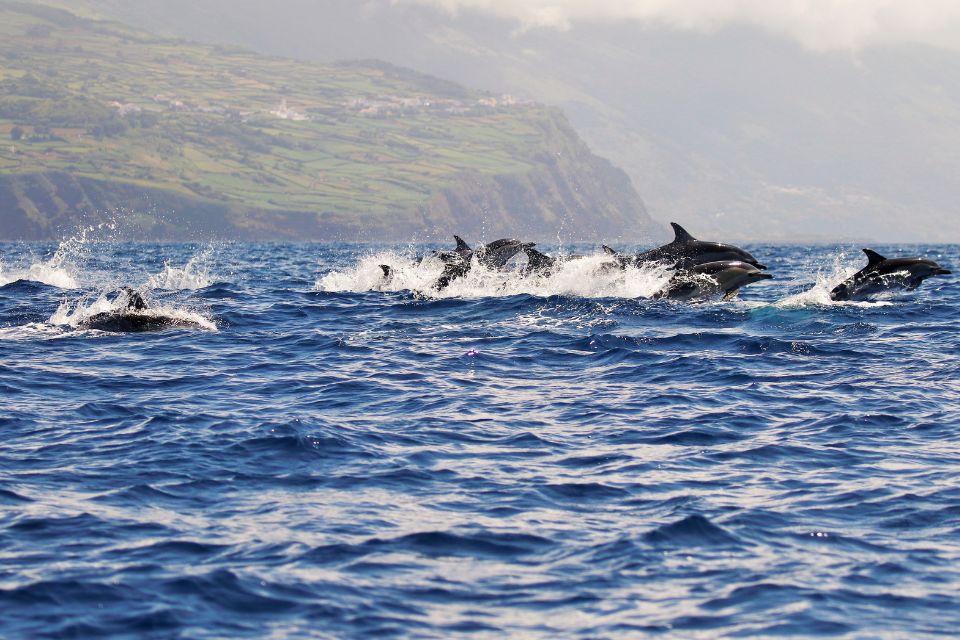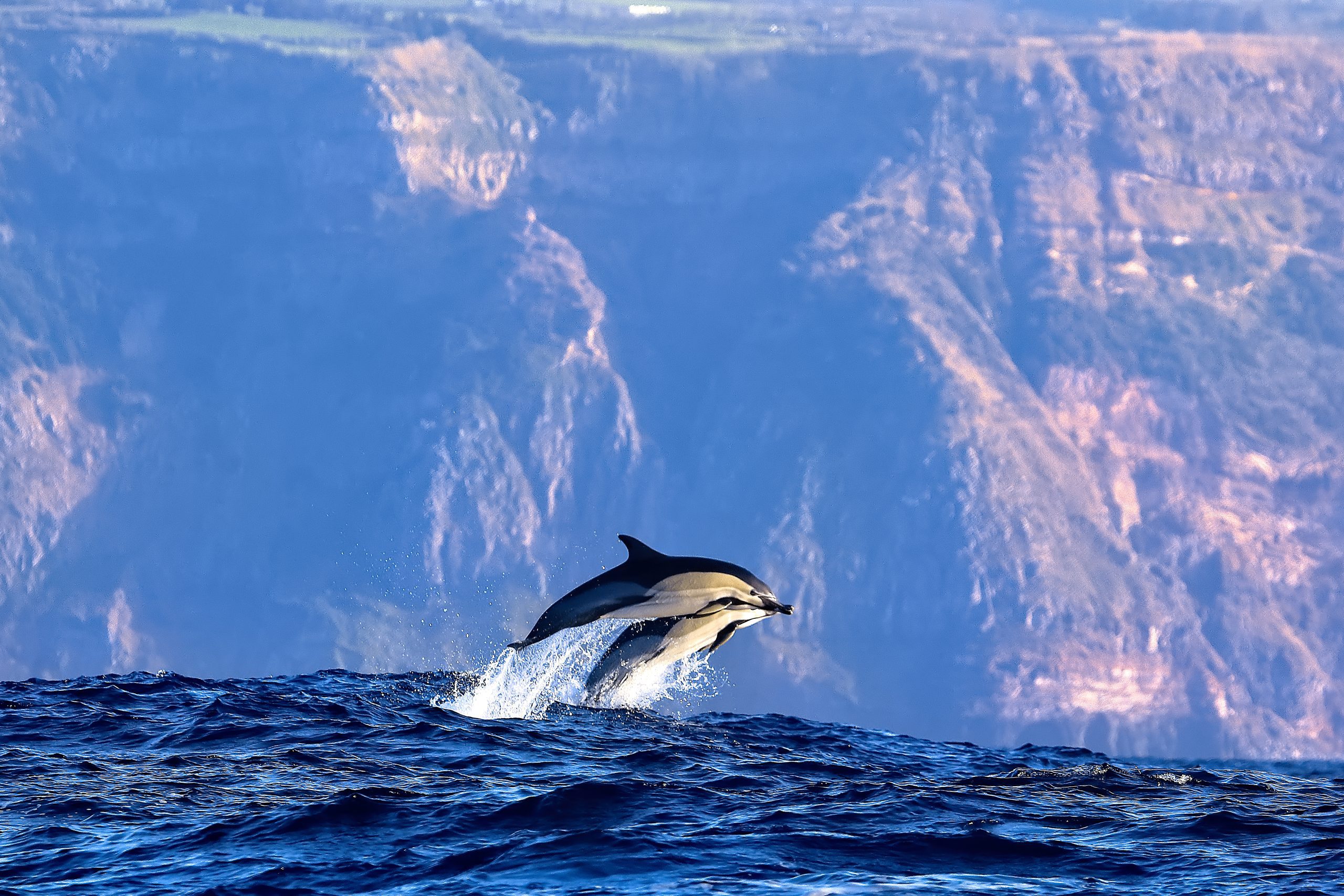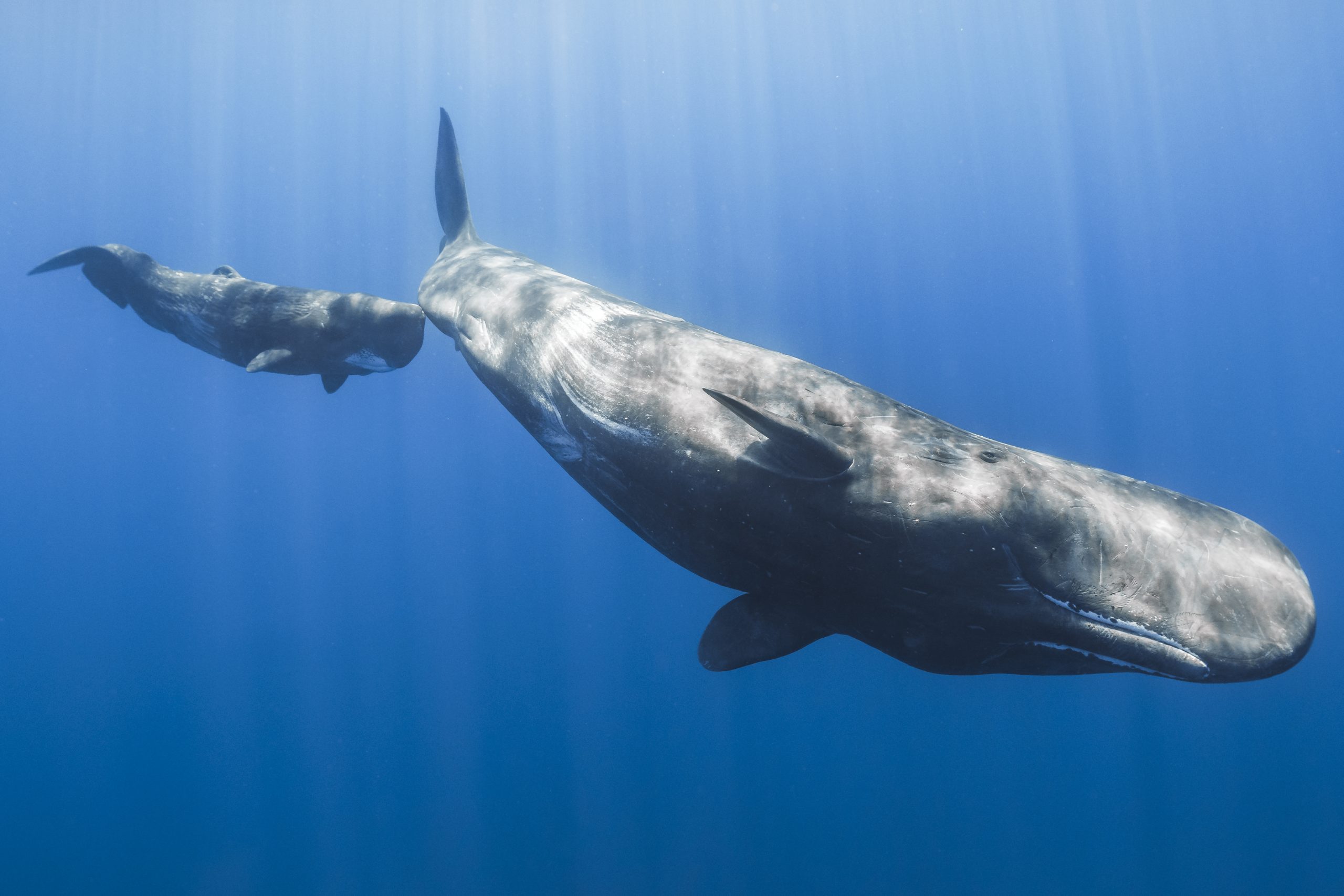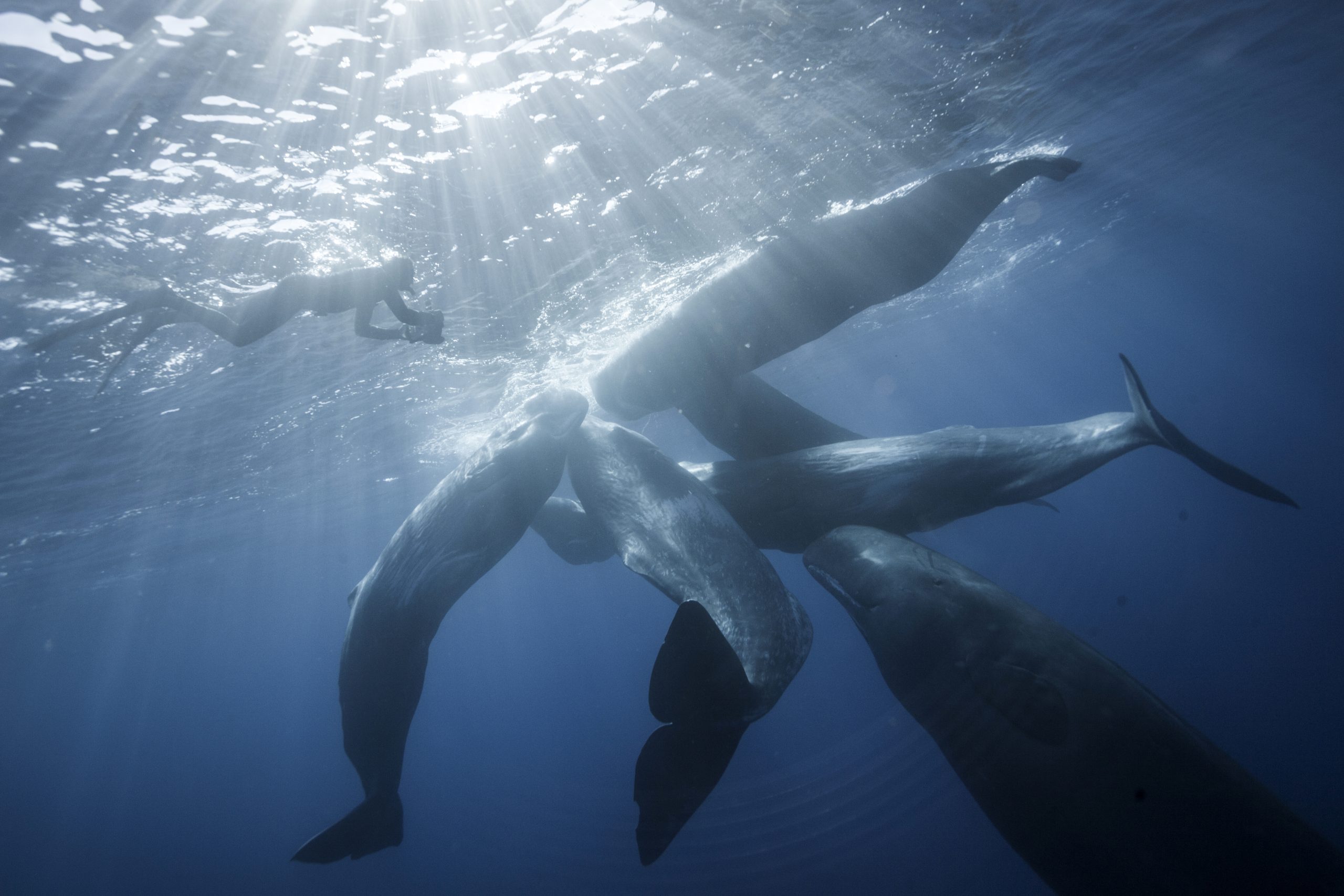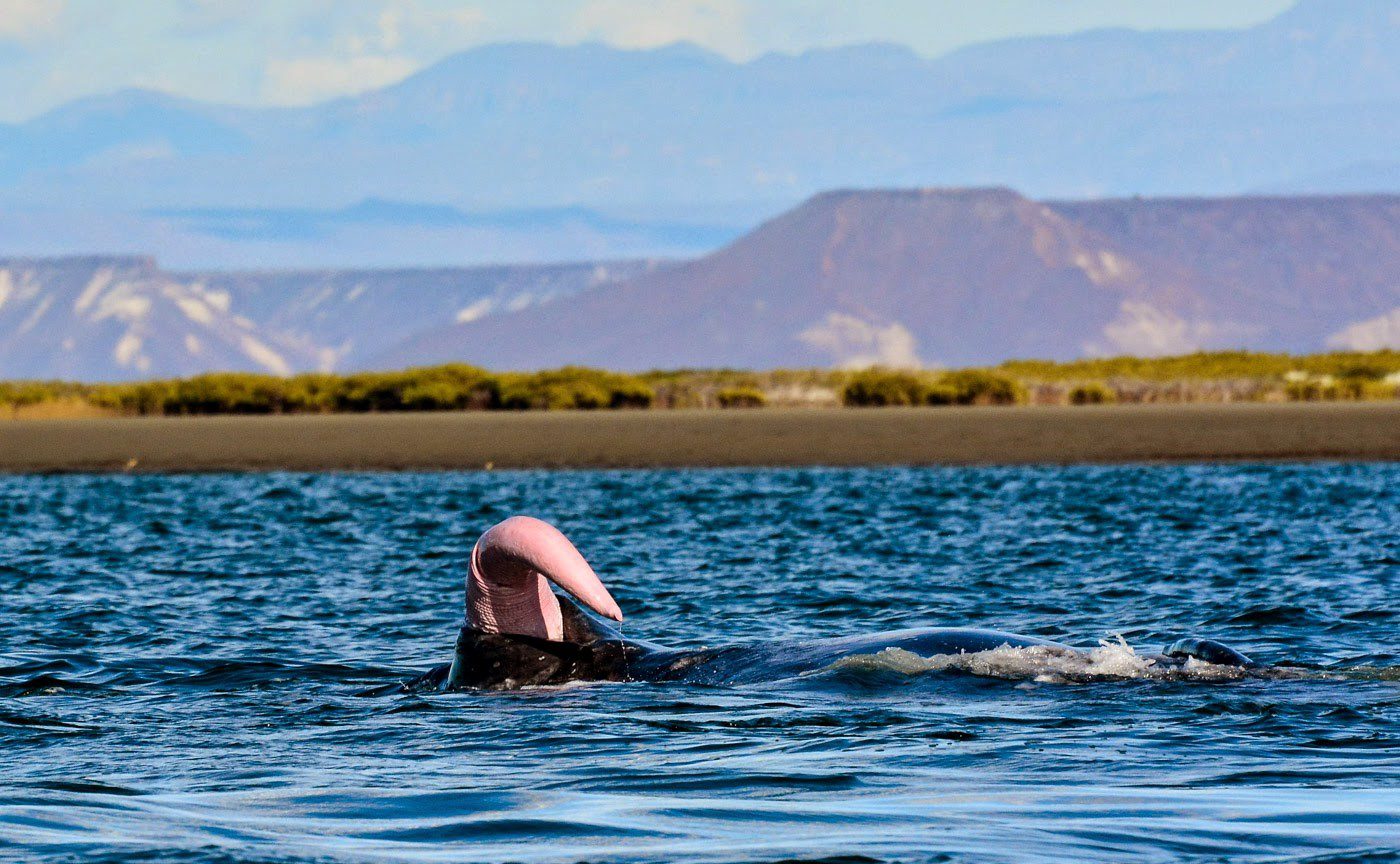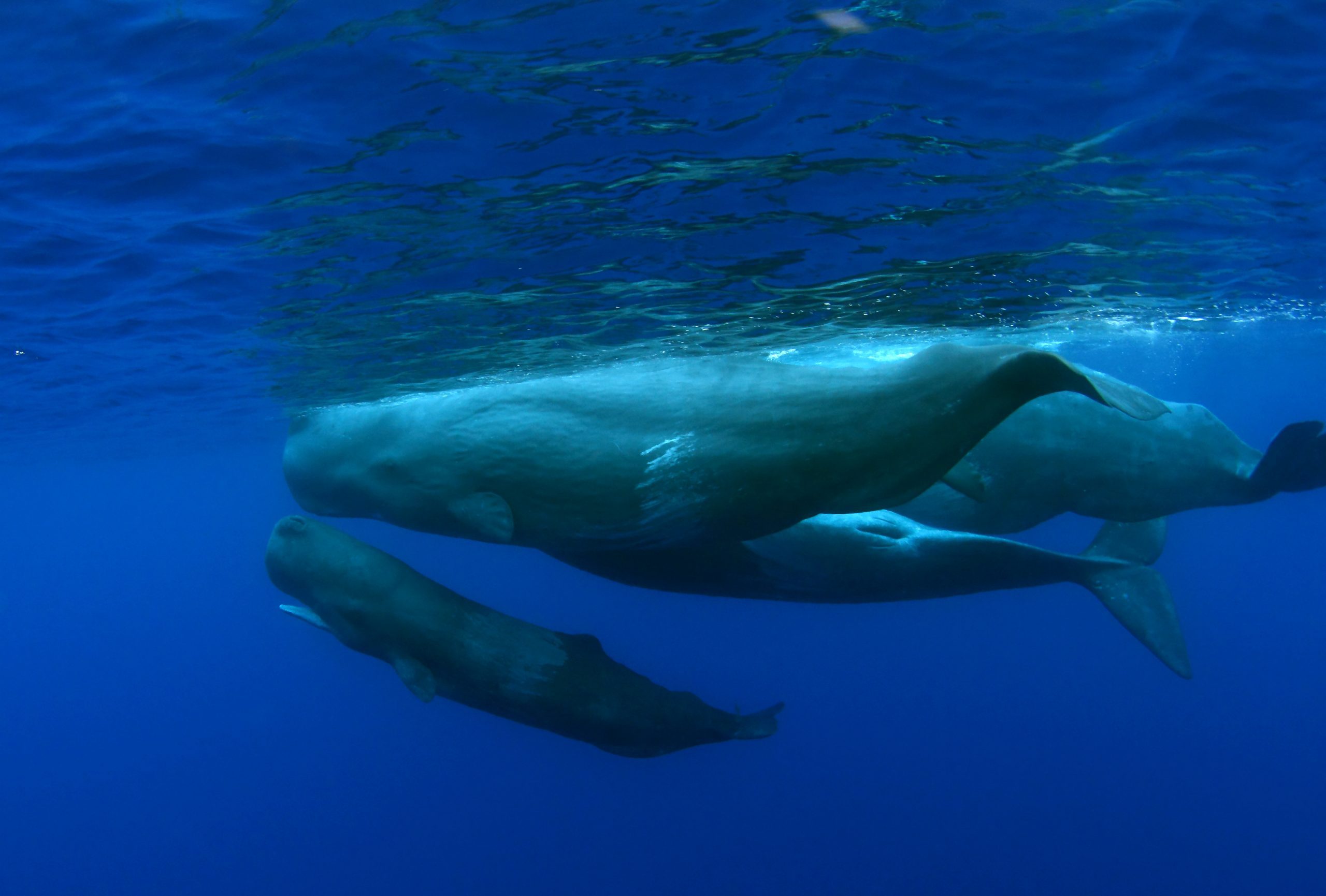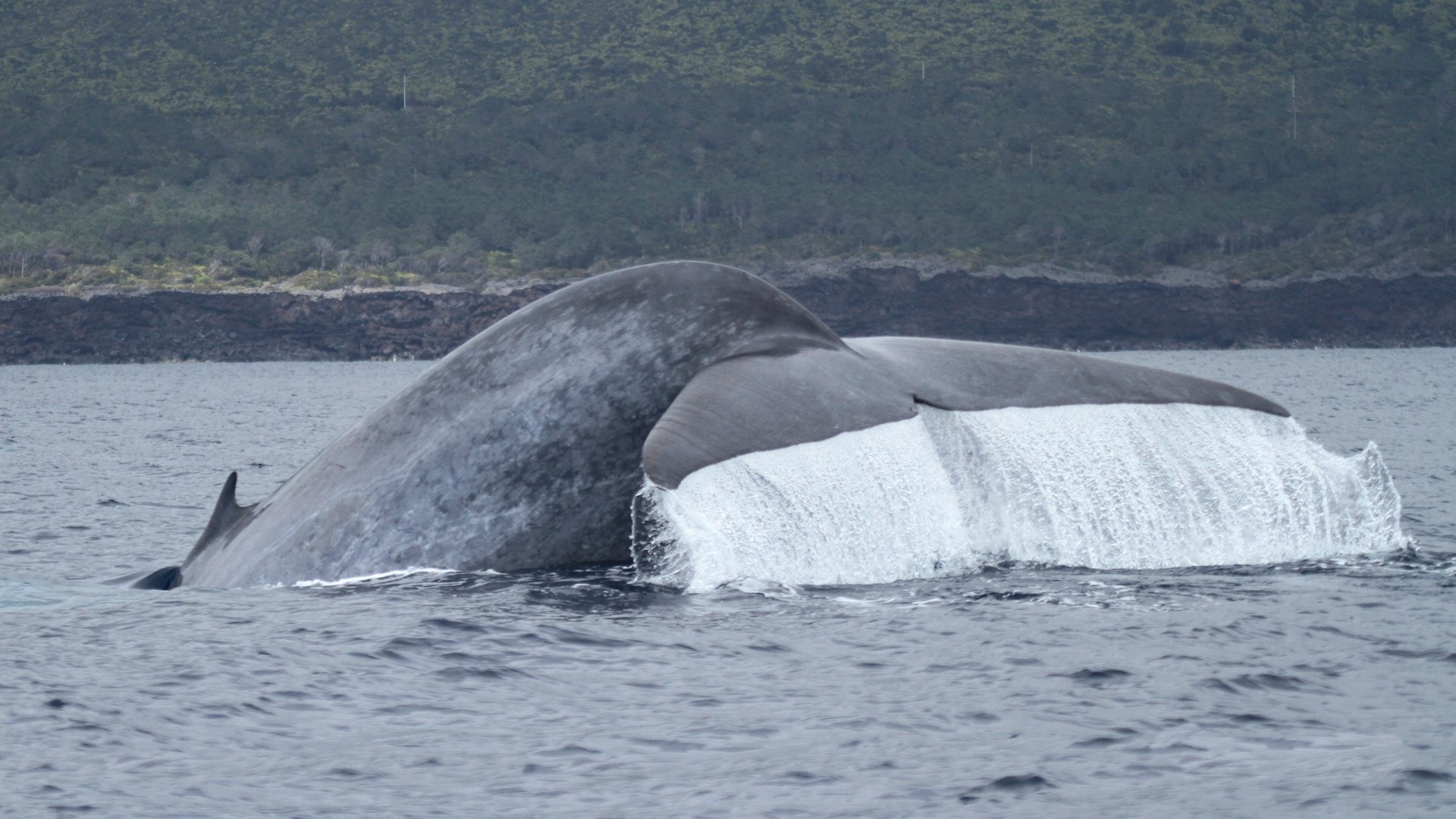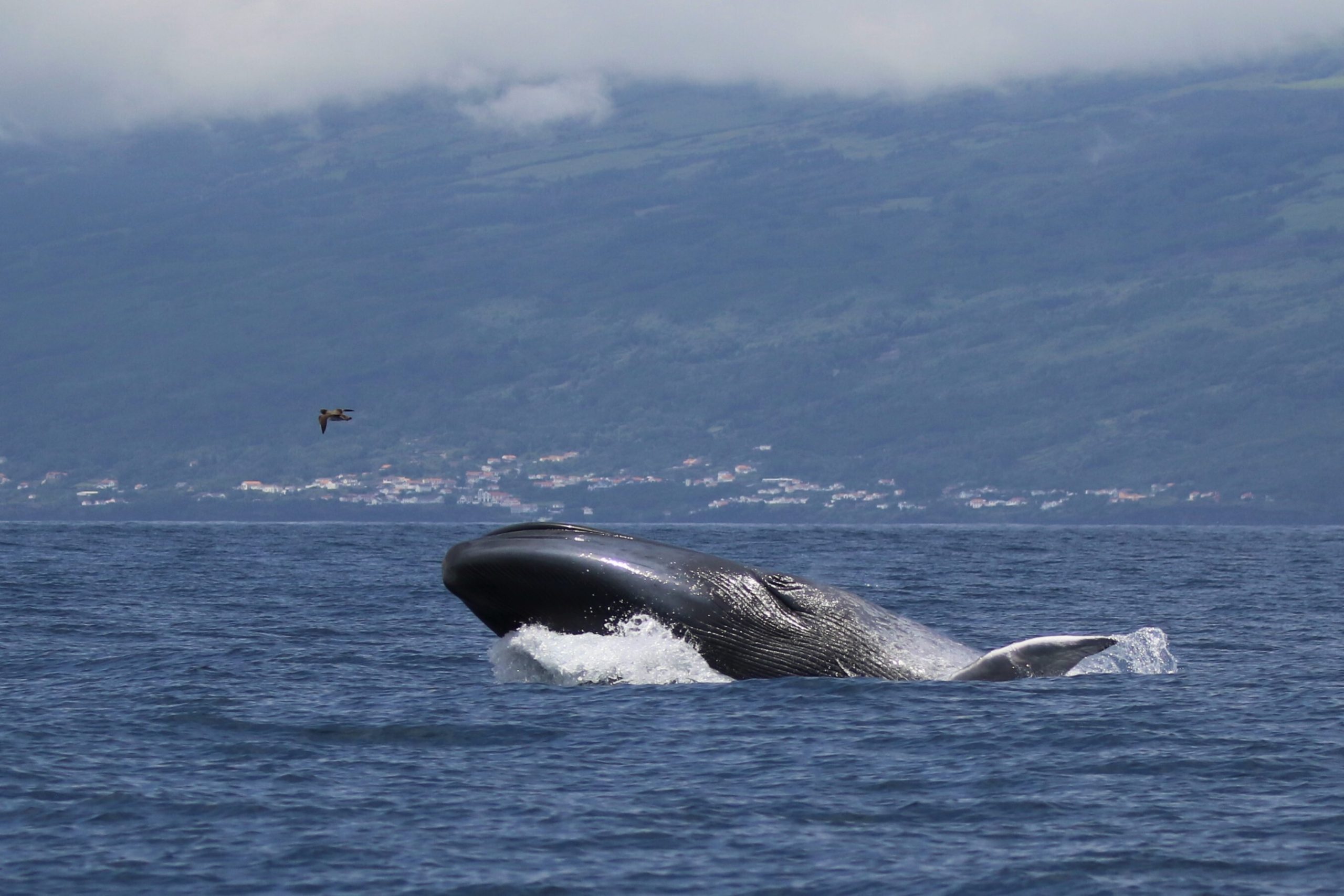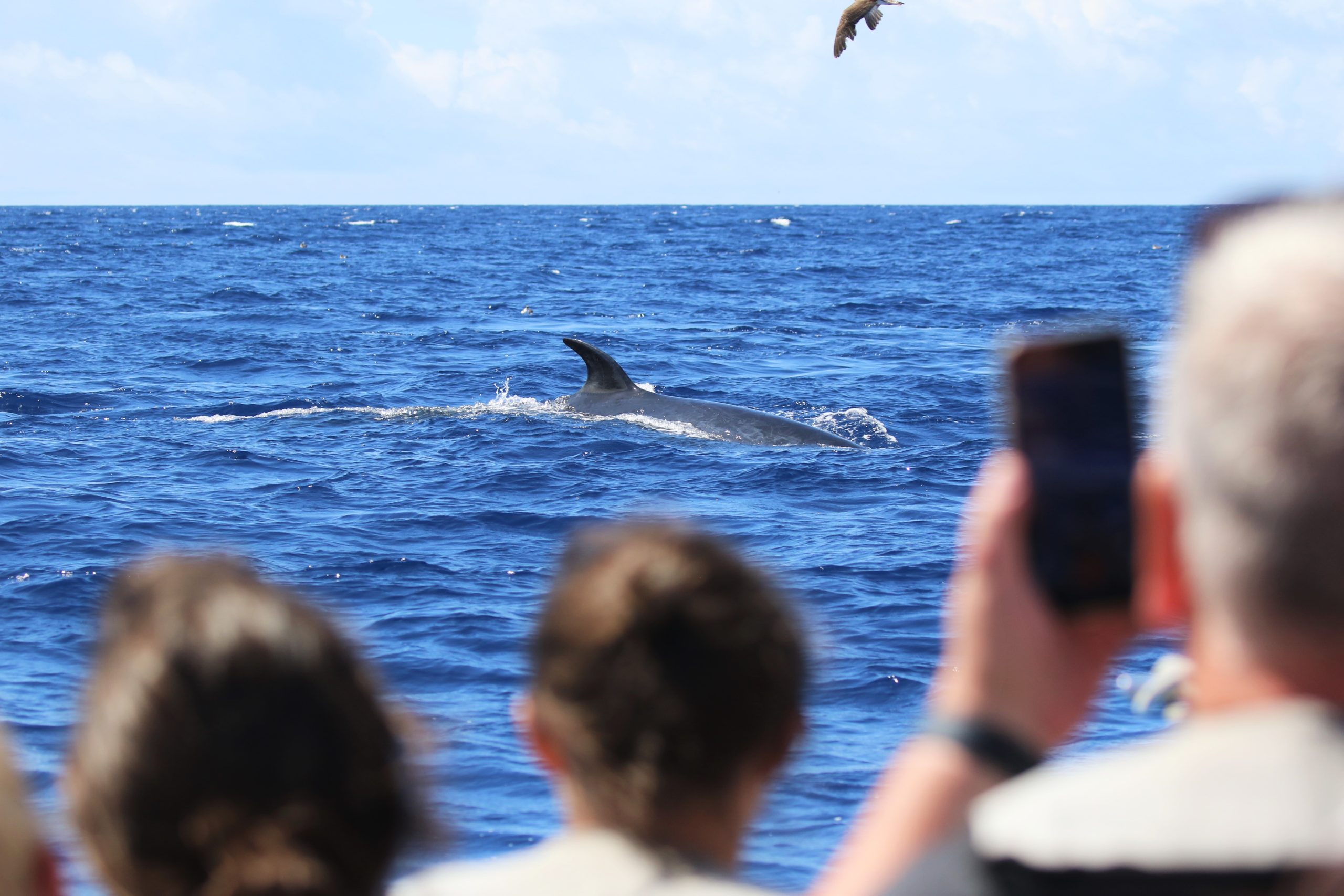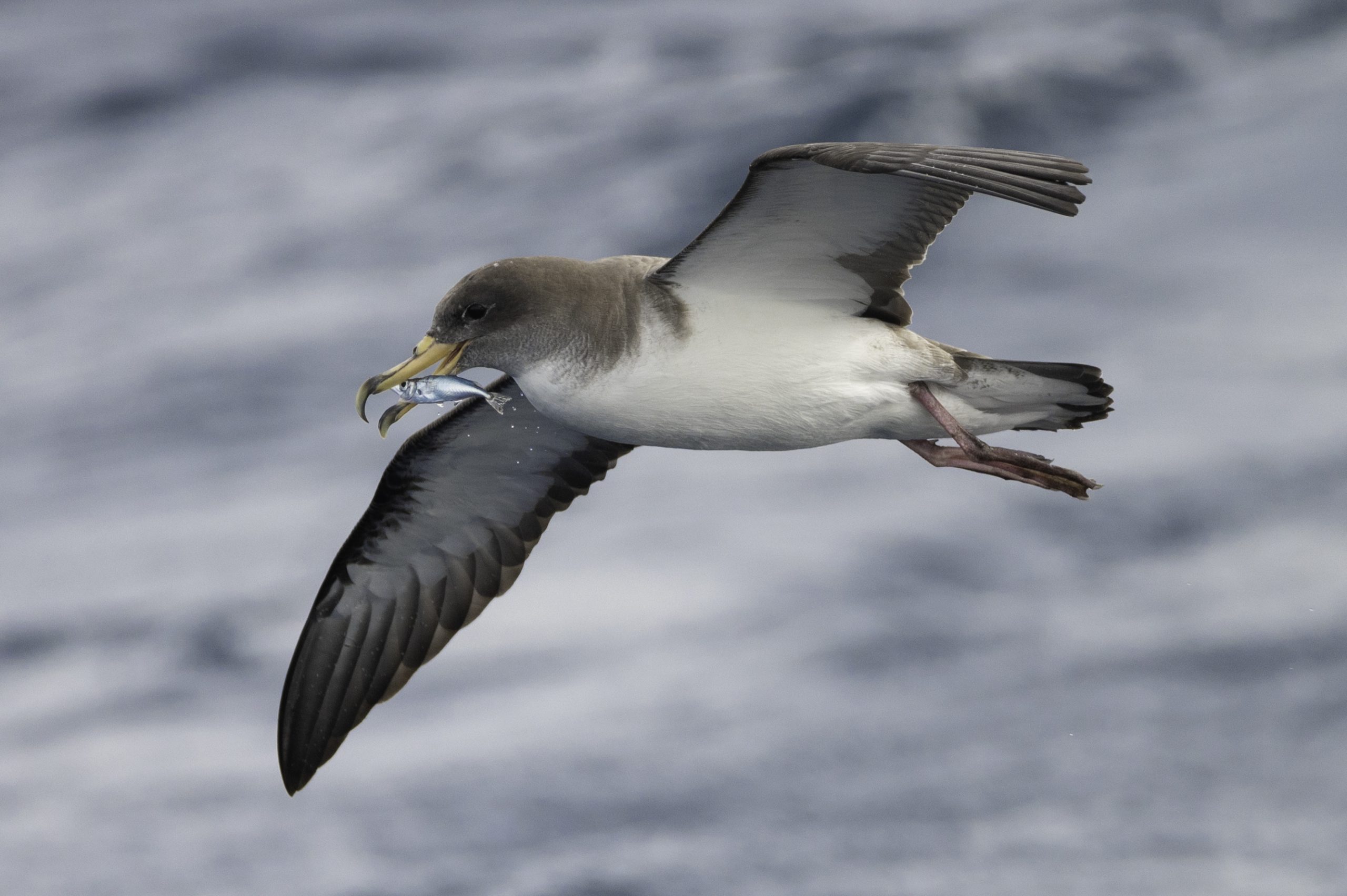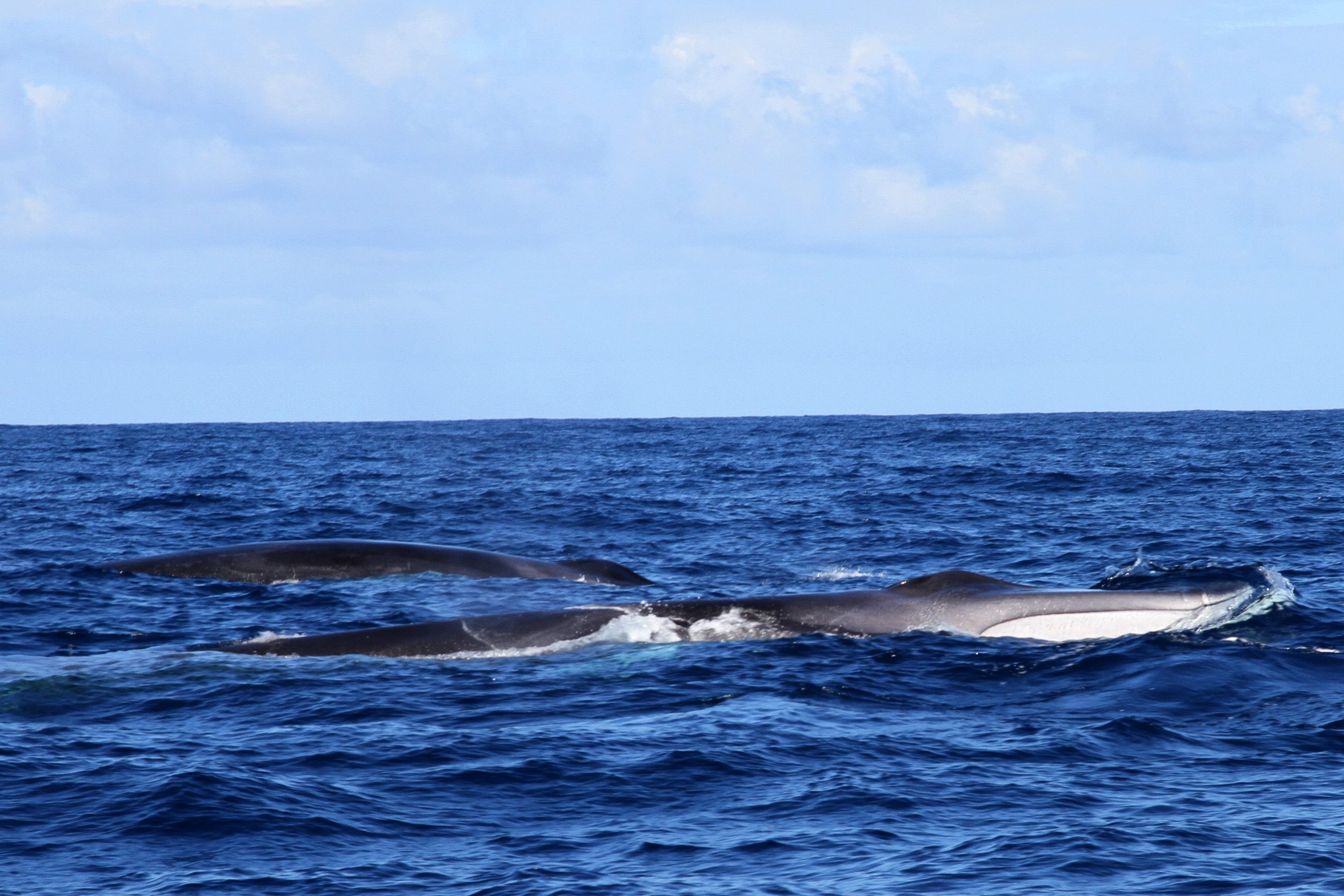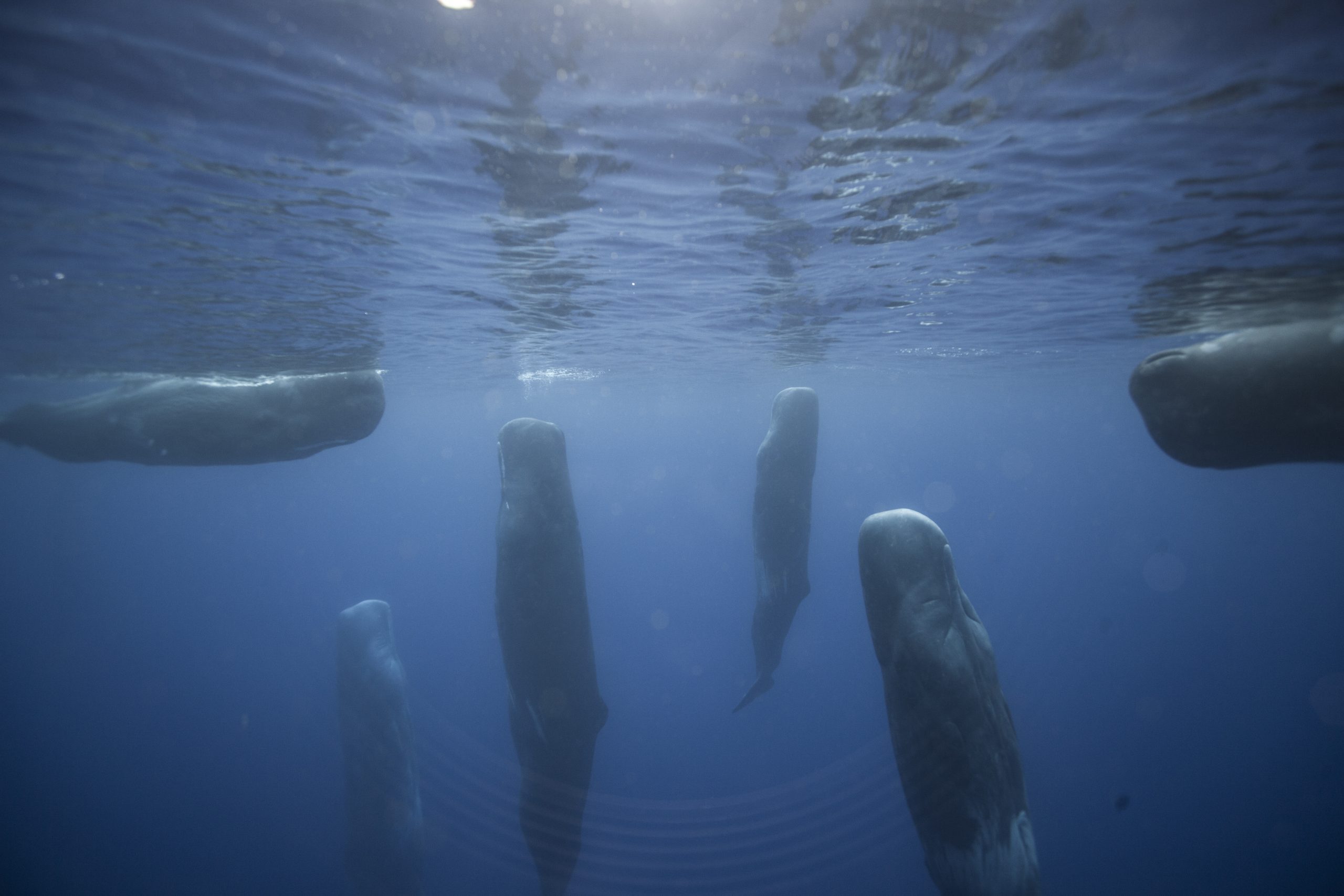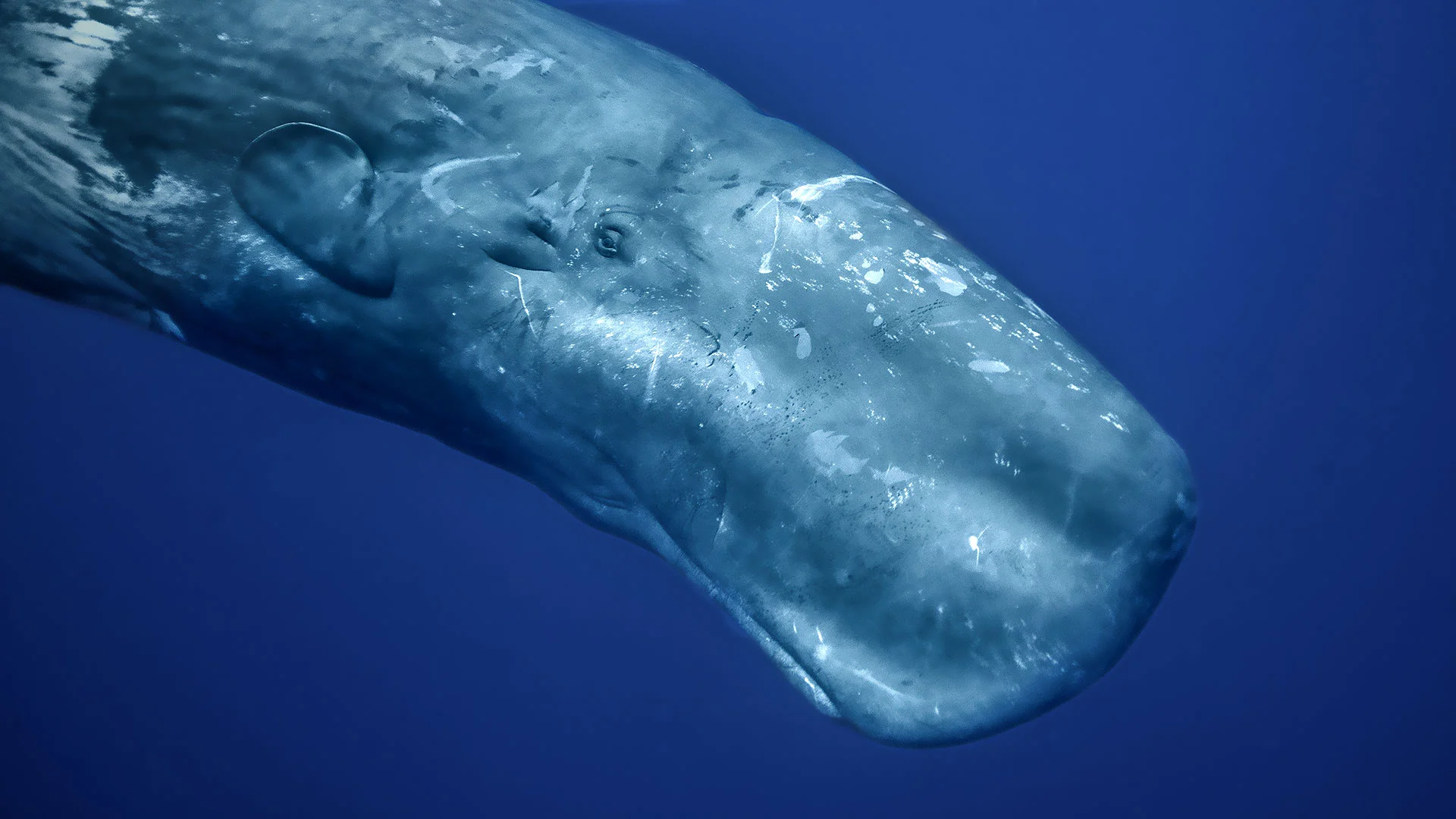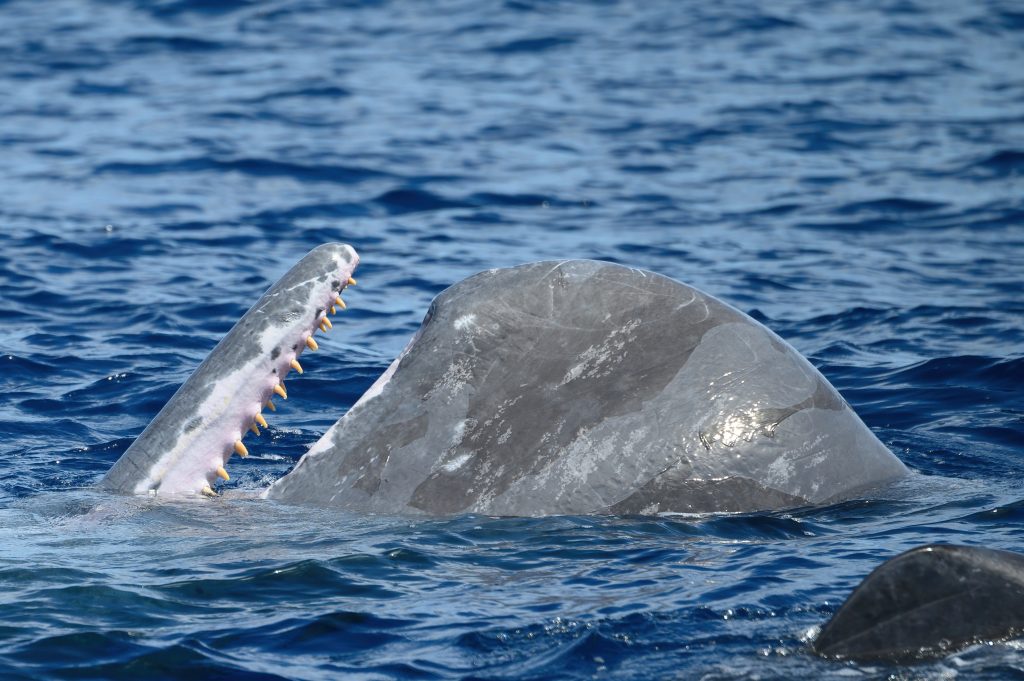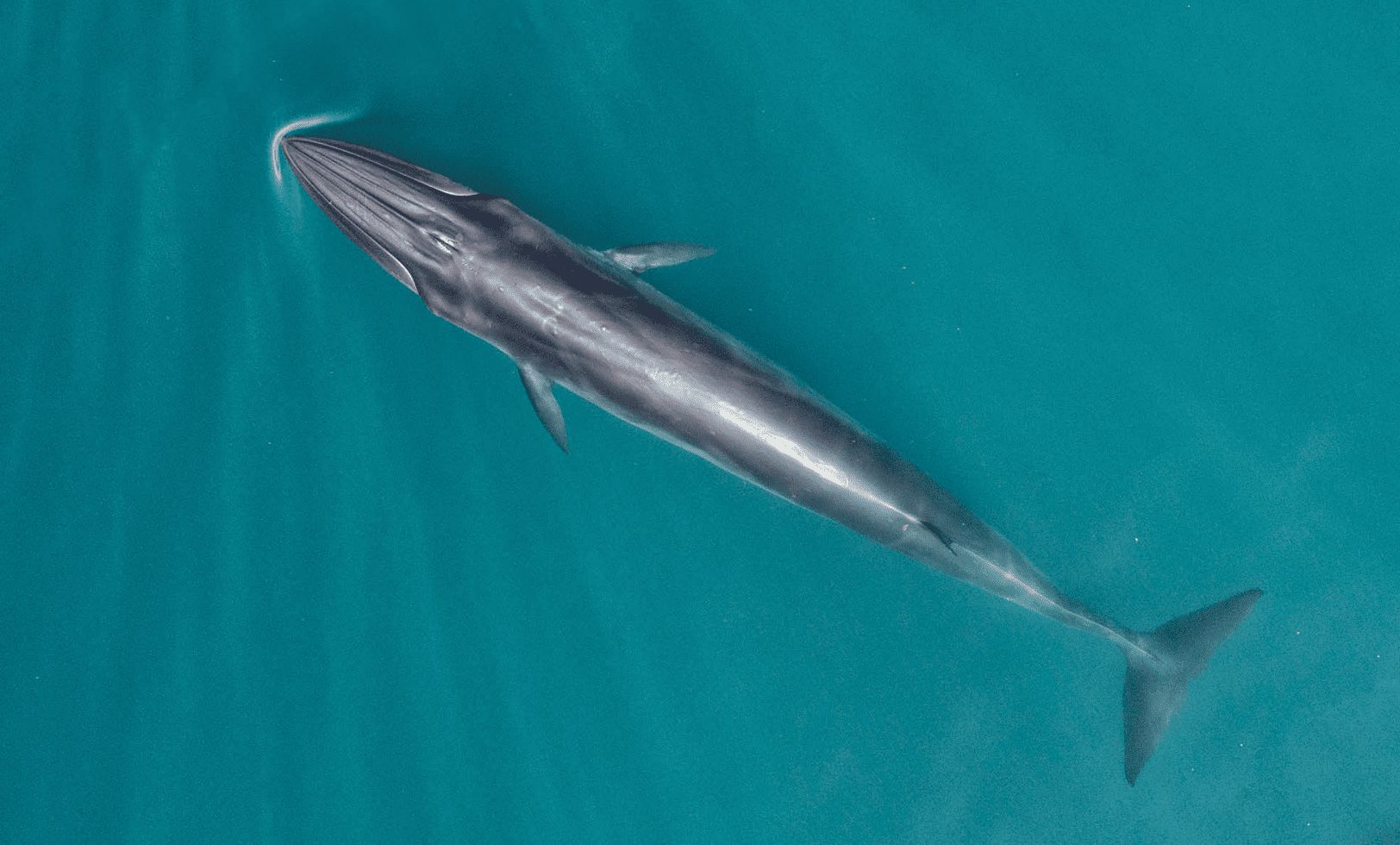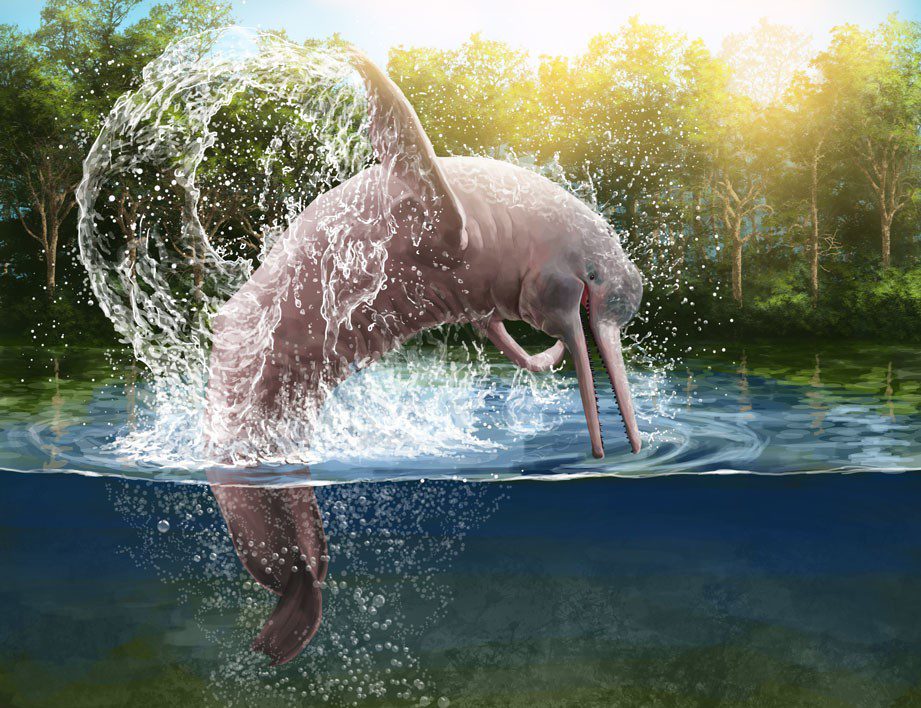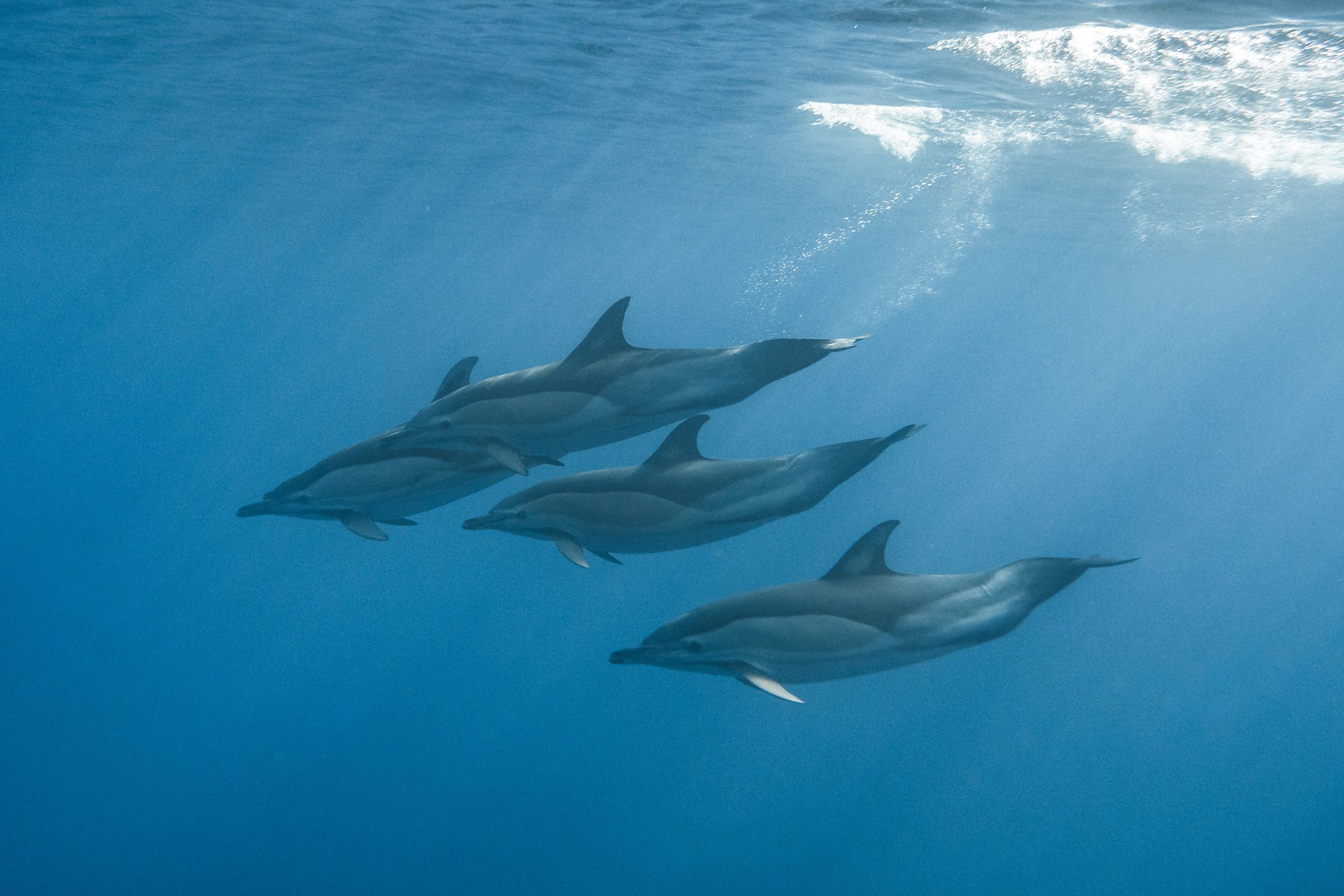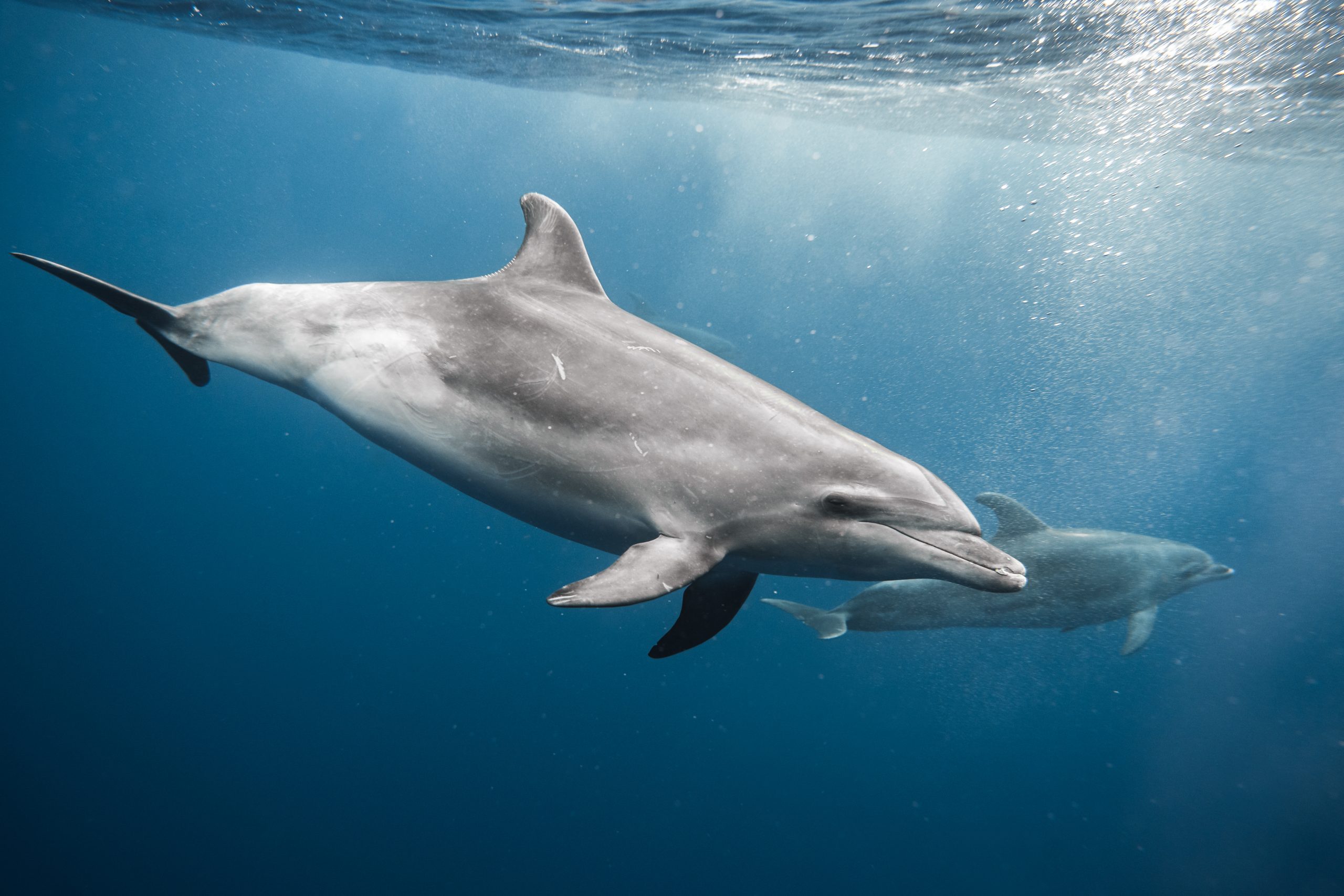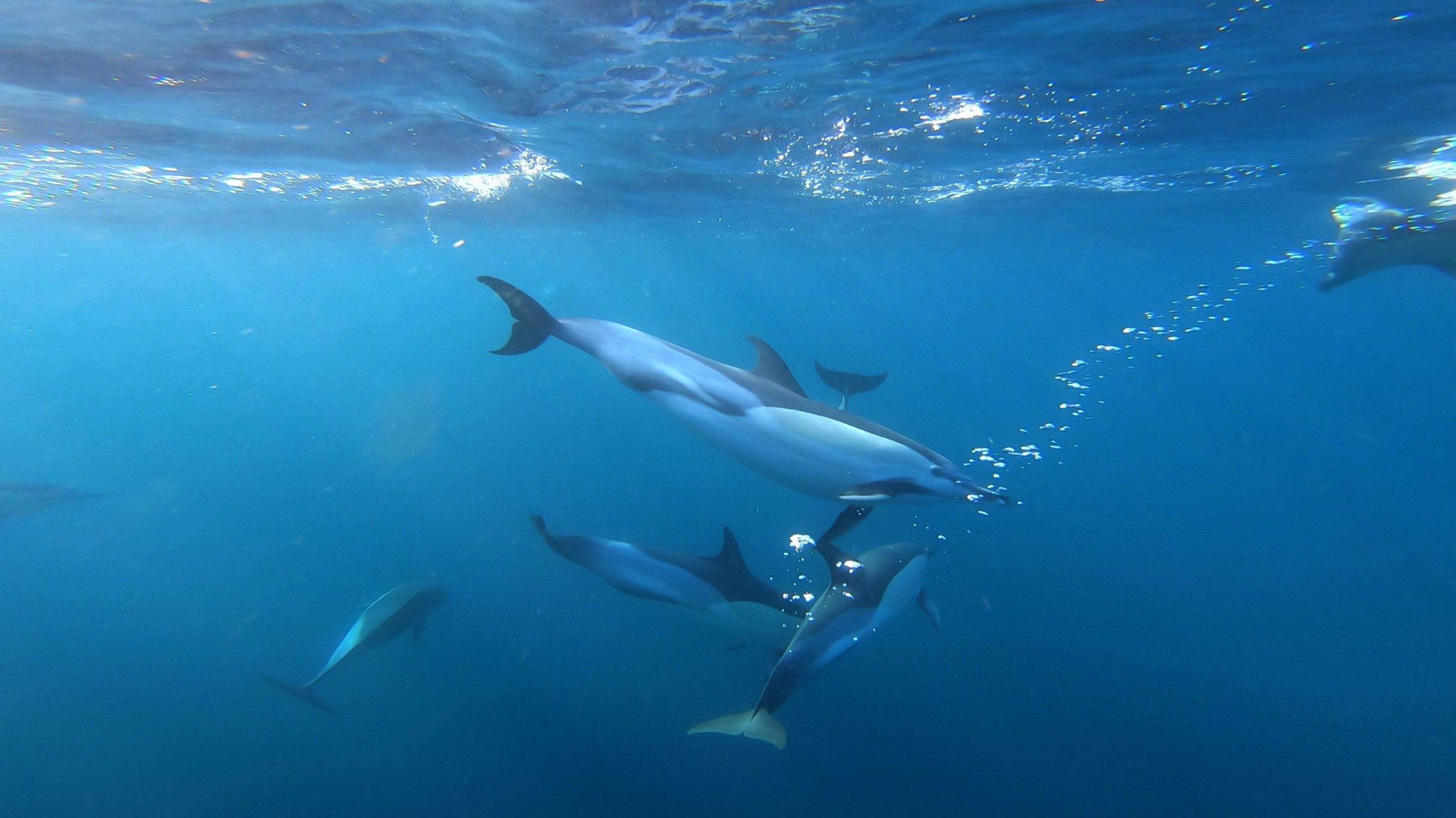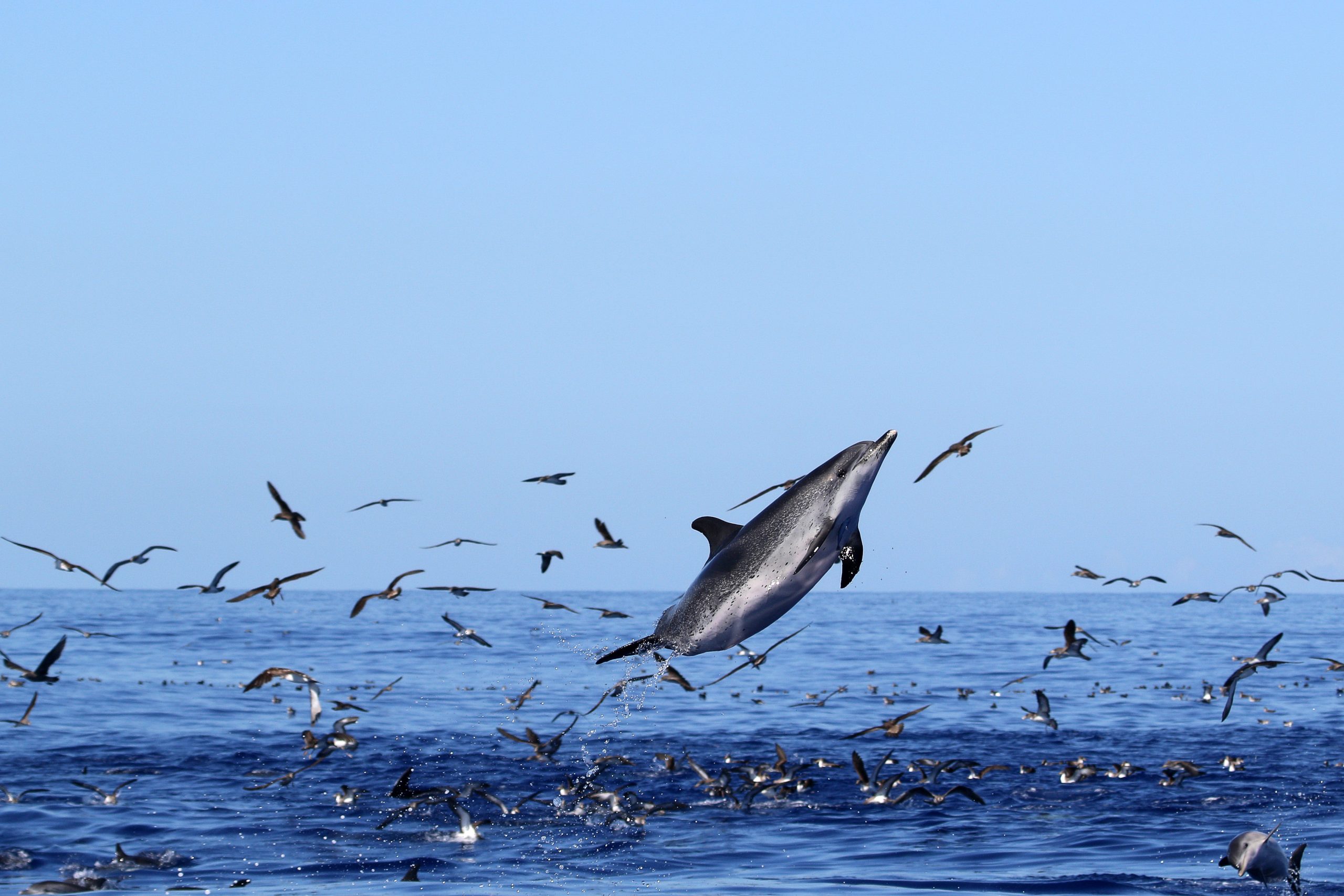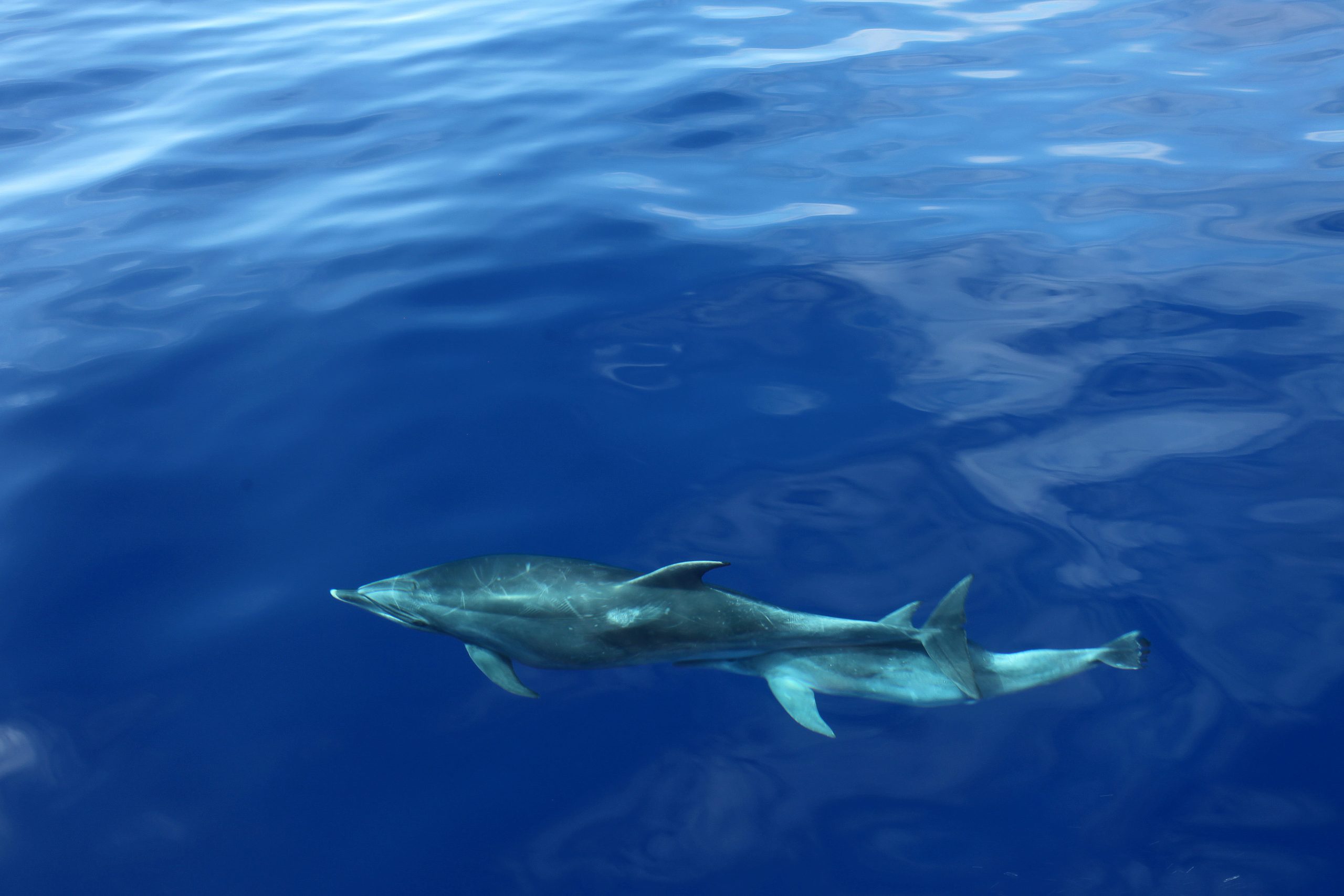Every year, with the arrival of spring, the Azores see the appearance of many Portuguese Man-of-War jellyfish (Physalia physalis). Although it is the most poisonous species you can find in the archipelago, don’t worry. On our whale and dolphin watching trips, you will be in complete safety. Sometimes people confuse the Portuguese Man-o’-war with jellyfish (which we call “Água viva” in the Azores). But the only thing they have in common is the fact that they have long tentacles. Let’s see, then, what the main characteristics of the Man-o’-war.
What characterizes the Portuguese Man-of-War Jellyfish?
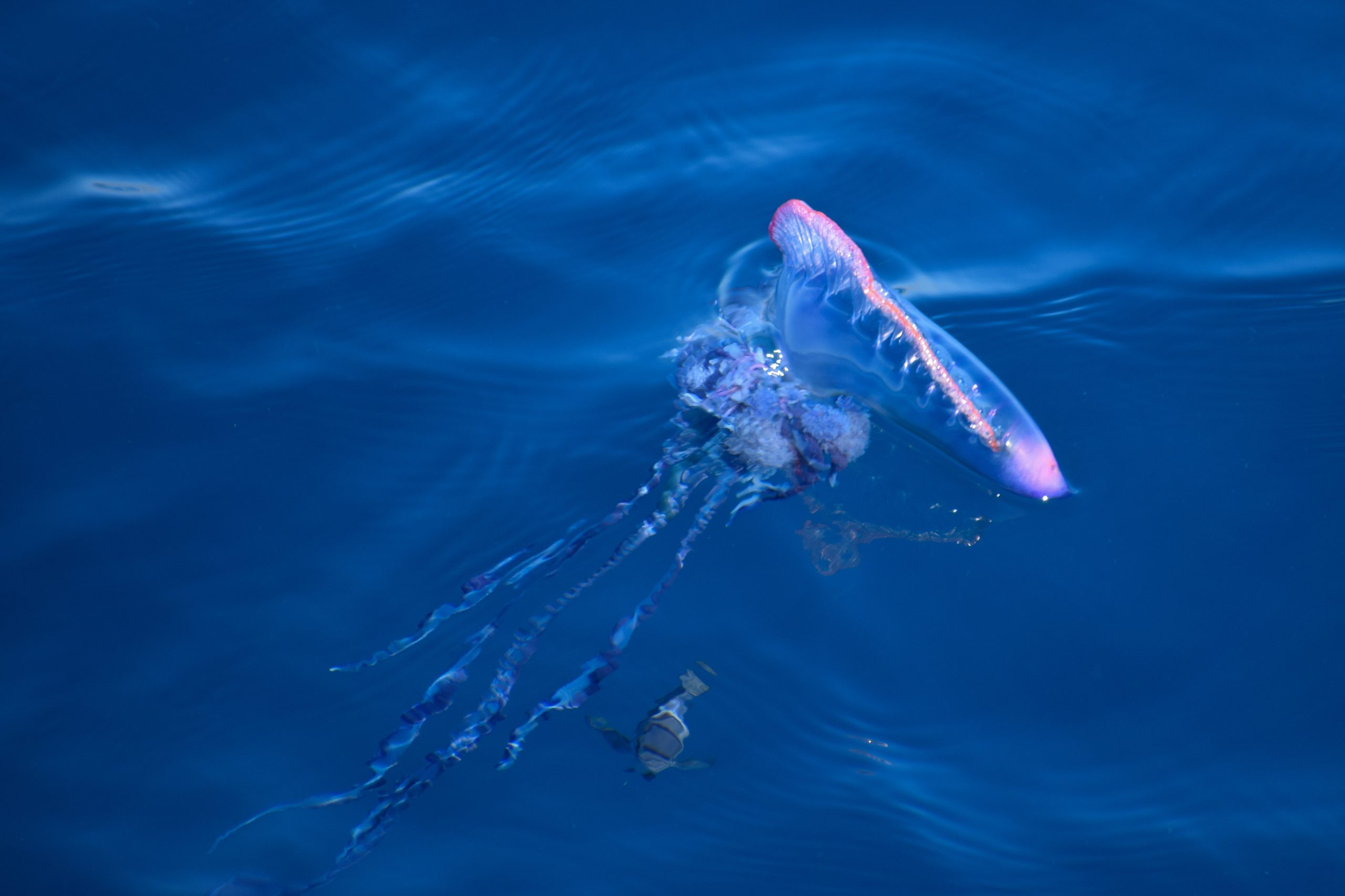
Contrary to what many think, the Man-o’-war is not a single organism. Four types of organisms come together to form it, each playing a role to ensure their survival. We refer to these organisms as polyps or zooids. The Portuguese Man-o’-war (Physalia physalis) can be classified as a colony of organisms that, although different, share the same DNA among themselves.
This species is invertebrate and carnivorous. Each of these four types of polyps is unique in the Portuguese Man-o’-war, and each has specific functions.
Pneumatophore (sailing navigation)

Man-o’-war, unlike jellyfish, can’t swim. Therefore, one of the polyps is responsible for filling with gas, creating a kind of vesicle on the surface that functions as a sail. This vesicle can reach a length of 30 cm and a height of 15 cm.
Since the Man-o’-war doesn’t swim and is only transported by wind and currents, they can often be found along the coast (beaches for instance).
So be careful… When you see something on the beach with pink, purple, and an intense blue with a mirrored glow or a gelatinous appearance, do not touch it!
Dactylozoids (capture of prey)
Man-o’-wars sail with the current and depend on the power of attraction to feed. They catch small fish and organisms that approach their tentacles. It is through the poison in these tentacles that they can immobilize and kill their prey. These tentacles are dark blue, curled, and can expand and reach up to 50 meters in length!
Gastrozoids (digestion)
The digestive system of the Man-o’-war is transparent, and it is possible to observe this polyp in action as it digests its meals. The nutrients are then distributed among the remaining polyps.
Gonozoids (reproduction)
Each individual organism of the Man-o’-war, that is, each polyp, is unisexual with a gonozoid (organ responsible for reproduction) and may contain ovaries or testicles. And did you know that all the organisms of the same Man-o-war are of the same sex? It is fantastic to observe the organization and complexity of a Portuguese Man-of-War. When ready for reproduction, the eggs or sperm are released into the environment. This is an attempt to fertilize the eggs and generate small larvae of the different polyps that form a Man-o’-war.
Why is it called Portuguese Man-o-war?

The pneumatophore (body responsible for navigation) resembles the sail present in Portuguese warships of the 15th and 16th centuries, such as the Caravel. As this species is widespread in Portugal, the British named it the Portuguese Man-of-War (not “caravel”), after the ship. In fact, in several languages, this species is known by the combination of the word “Portugal” and the name of the caravel ship. For example, Carabela, Caravella, Galère, Galeere, Oorlogschip, Orlogsmand, Örlogsman, Gálya.
What should you do if you are stung by a Portuguese Man-of-War?

If a Portuguese Man-of-War stings you, wash the wound with salt water and apply vinegar. The purpose of vinegar is to help stop the discharge of poison into the body of the affected person.
What should you not do?
Under no circumstances should alcohol or freshwater be applied to, nor should the affected area be pressed with, a compress. This speeds up the process of passing the poison into the bloodstream.
Could it be dangerous?
In case the person stung has allergies, it is necessary to take extra care and pay attention to any sign of an allergic reaction.
If the pain persists or if you notice any signs of an allergic reaction, seek immediate medical attention at the nearest health center. Although Man-o’-wars have a potent and painful poison, it is rare for this to be lethal to humans.
Man-o’-war stings can cause burns to the third degree, as well as some of the following symptoms:
- Intense and instantaneous pain;
- Gastrointestinal symptoms (abdominal pain, nausea, and vomiting);
- Muscle spasms;
- Headache;
- Drowsiness;
- Fainting;
- Cardiorespiratory disorders.
Check all our articles exploring the unique wildlife of the Azores: Dolphin Conservation Status | Pink Dolphins | Tuna in the Diet of Dolphins | Dolphin Olfactory Abilities | Whale and Dolphin Reproduction | Are Whales Carnivores? | Does Whale Sperm Make the Ocean Salty? | Communication Among Whales and Dolphins | How Do Whales & Dolphins Sleep? | How Long Do Whales Live? | How Long Can a Whale Hold its Breath
If there are some dead on the beach… Can I touch it?

Portuguese Man-of-War is dangerous, and even after death, they can sting and transmit their poison.
Swimmers must always respect the alerts in bathing areas and remain especially cautious during periods when Man-o’-wars are present to avoid their stings. Here’s an experience we don’t recommend to anyone! When swimming, always be careful, as it is sometimes possible to confuse a Man-o’-war with a floating bag.
Do Man-o’-wars have natural predators?

Some species see the Portuguese Man-o’-war as food. One of these species is often observed in the Azores: the loggerhead turtle, which has a hard skin and becomes immune to the toxin present in the tentacles of the Portuguese Man-of-War. Another species that also feeds on Man-o’-war is the sunfish.
Would you like to know the best times for whale watching?
Take a look at our whale watching calendar and plan your next adventure! Don’t miss the chance to spot these majestic creatures in Azorean waters. 🐋 🌊
Where can you find the Portuguese Man-o-war?
The Portuguese Man-of-War is commonly found in subtropical and tropical waters. However, as this species follows the currents, it has already been found in the Pacific Ocean, the Indian Ocean, the Caribbean Sea, and the Sargasso Sea, extending beyond the Atlantic Ocean.
They’re gorgeous and colorful, but… for a scare-free holiday, always be alert, especially in spring and early summer when swimming in the ocean.
Check all our articles exploring the unique wildlife of the Azores: Swimming Speed of Whales | Breath-Holding Capacity of Blue Whales | Dolphin Mating Behavior | Collective Nouns for Dolphins | Top 3 Facts & Curiosities about Dolphins | Dolphin Diet and Feeding Habits | Fin Whale Conservation Status | Sperm Whale Diet | Sperm Whale’s Scars | What Does a Whale’s Penis Look Like? | What Does Whale Milk Taste Like? | Portuguese Man-o’-War Jellyfish | What Do Whales Eat? | Can You Hear Whales Above Water?

